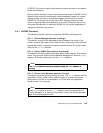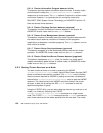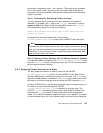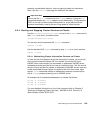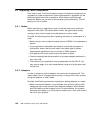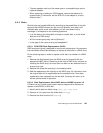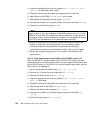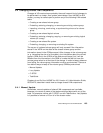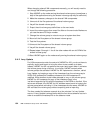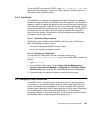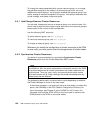
162 IBM Certification Study Guide AIX HACMP
4. Logically remove the disk from the system (rmdev -l hdiskX -d; rmdev -l
pdiskY -d if a SSA disk) on all nodes.
5. Physically remove the failed disk and replace it with a new disk.
6. Add the disk to the ODM (
mkdev or cfgmgr) on all nodes.
7. Add the disk to the shared volume group (
extendvg).
8. Increase the number of LV copies to span across the new disk (
mklvcopy).
9. Synchronize the volume group (
syncvg)
10.Stop all the application(s) using the shared volume group, varyoff the
shared volume group and export/import it on the backup node(s).
Furthermore set the characteristics of the shared volume group
(autovaryon and quorum) on the backup node(s), then vary it off again.
11.Varyon the shared volume group on it’s “normal” node and start the
application(s).
8.3.3.3 Disk Replacement (Non-RAID) with HACMP version 4.3
With the HACMP 4.3 enhancements to the C-SPOC LVM utilities, the disk
replacement does not cause system down time, as long as the failed disk was
part of a RAID array, or if all the LVs on it are mirrored to other disks, and the
failed disk is hot-swappable.
1. Identify which disk has failed using
errpt, lspv, lsvg, diag.
2. Remove all LV copies from the failed disk (
smit cl_lvsc).
3. Remove the disk from the VG (
smit cl_vgsc).
4. Logically remove the disk from the system (
rmdev -l hdiskX -d, rmdev -l
pdiskY -d if SSA disk)
5. Physically remove the failed disk and replace it with a new disk.
6. Add the new disk to the ODM (
mkdev or cfgmgr).
7. Add the new disk to the sharedvg (
smit cl_vgsc).
8. Increase the number of LV copies to span across the new disk (
smit
cl_lvsc
).
9. Sync the volume group (
smit cl_syncvg).
Steps 10 and 11 are only necessary in HACMP versions prior to 4.2. With
HACMP 4.2 and later Lazy Update will export/import the volume group on
the backup node in case of a takeover. However, it is necessary to update
the PVID of the replaced disk on the backup nodes manually.
Note




